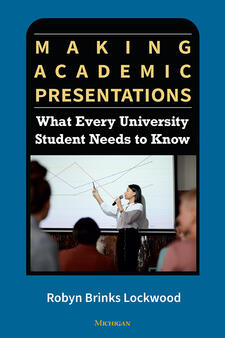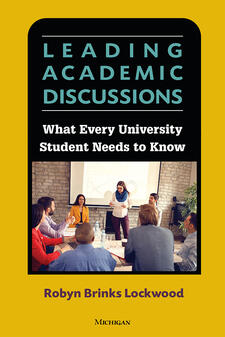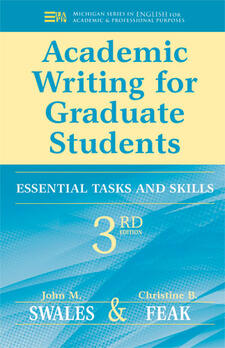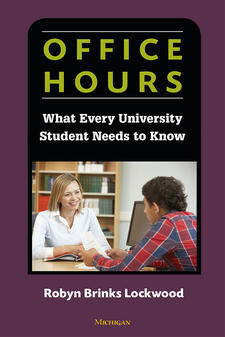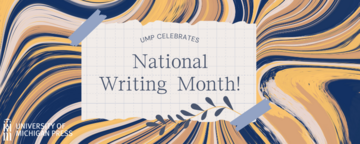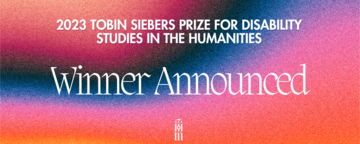Q&A with Robyn Brinks Lockwood
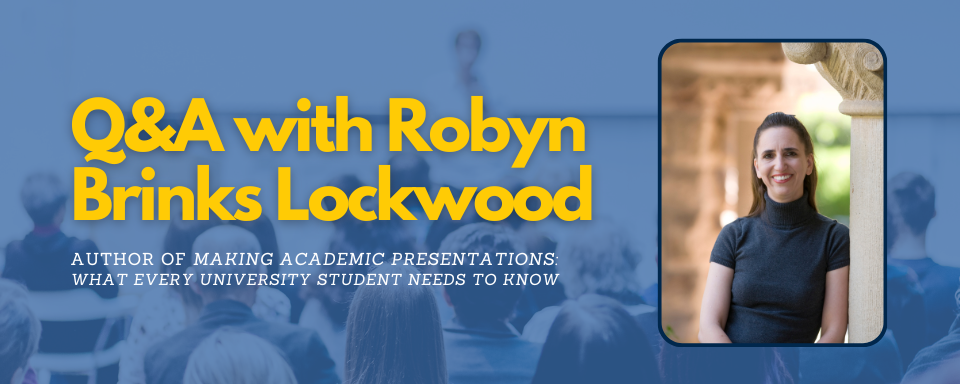
This guest author post is a Q&A with Robyn Brinks Lockwood, author of the new book Making Academic Presentations: What Every University Student Needs to Know, from the University of Michigan Press. The book is available in paperback and accessible ebook formats.
How did your experience as a Lecturer at Stanford University influence your decision to write Making Academic Presentations?
Many students admitted to U.S. universities or universities in other English-speaking countries already have achieved a certain level of fluency; however, they’re often still surprised by what is needed to succeed in their university classes. Despite many years of English classes, students often find themselves overwhelmed when they must converse in English with native speakers in social conversations, academic discussions, and professional settings, such as presentations for classes or conferences, job interviews, and meetings. The speech events they participate in both on and off the college campus are different from the scripted role plays and sample dialogues they practiced in their textbooks. Leaving the safe haven of their ESL classroom where they practiced English with other second-language learners and being thrust into an authentic environment that doesn’t often follow a script can be difficult for students.
I wanted to prepare my students for the language and structure of common interactions in the settings they were most likely to encounter when they arrived on campus. Since many universities require or recommend a public speaking course and since this is a skill students will use beyond just that one class, I decided one of my books should cover academic presentations. Many students have never given a presentation outside of their English classroom. I wanted to prepare them for what they would have to do once they entered other classrooms and other settings, where they wouldn’t be with their English teacher and other ESL students. I wanted them to be prepared for a non-sympathetic audience comprised of people who don’t look at them as “second-language speakers” but rather as equals with everyone else in the room. I believe my job is more than teaching English; it is also teaching students to succeed at the university and their professional careers.
Why is it so important that students learn how to give presentations?
Knowing how to present extends beyond one class dedicated to teaching presentations at the university. My students have shared stories of presenting in history, accounting, science, engineering, education, law, medicine, psychology, and even math classes. The list goes on. Presentation skills are also transferable to far more settings. Students who want to be TAs, for example, will need to present. Students pursuing graduate studies will present in research group meetings, at conferences, and in classes. Presentation skills will be used during job interviews and to persuade people, lead groups, and even make friends. These skills also build confidence and, of course, continue to develop English fluency and improve communication.
In the book, you break down the steps of making a presentation into five moves. Could you tell us a little bit about why this five-step approach can be helpful for students?
Let me also make mention here that I teach academic writing at Stanford University as well. Students are often better prepared for writing…or perhaps they’ve just taken more writing courses. We teach them how to write the five-paragraph essay and how to organize their writing for a variety of genres. We often teach sentence framing to incorporate into their writing. The same attention is given by John Swales and Christine Feak in Academic Writing for Graduate Students, where, for example, they teach the three “moves” of an introduction for a research paper. I believe this emphasis on writing is necessary. Writing is an important skill that students continually need to develop. However, we don’t often give this same and necessary attention to developing speaking skills. We offer a variety of speaking courses, yet we sometimes fail to teach beyond scripted dialogues and unrealistic role plays I mentioned earlier. We also tend to describe what we want English to be or what it should be rather than what English really is…how it is actually used by native speakers. As a result, my students were feeling overwhelmed by and afraid of speech events.
Since my writing students so appreciated the moves of writing, I thought presenting speaking the same way would be beneficial, thus, I started preparing lessons for my students that broke speech events into “moves.” It’s an easy way to organize, associate certain language framing with the right moves, and build confidence since students know the steps a speech event will follow. I think students really appreciate a simple breakdown of the speech event into manageable pieces. Since a lot of my students are studying the sciences and engineering, the move-by-move, step-by-step approach is appealing. It was also important to me to create a smaller, less expensive book that we could finish during a term and that could be used with any types of speeches that I wanted my students to practice. One thing I have learned is that many, many ESL teachers teach presentations, but we all teach different types of presentations. By creating the book this way, teachers can apply the moves to many types of speeches, from the popular persuasive or informative speeches to the different projects offered in the book, such as panel presentations. The appendix of the book includes rubrics for the presentations as well and these can be used as is or adapted as the teacher sees fit.
How does Making Academic Presentations fit with your books Leading Academic Discussions (2021) and Office Hours (2019)?
Making Academic Presentations is actually the third book in the series. The other two are similar in that they teach common speech events students face on college campuses and break them into moves. They are also similar in that they offer the language most commonly used during each move and include many practice activities. These two books also offer free videos and analysis questions to accompany those videos.
Office Hours was first and it was born after so many awkward office hours students struggled with, some with me but so many more with professors or TAs or even the office hours they had to hold themselves when they became TAs. Many students were challenged by not recognizing what to say when they arrived or when to take their leave. Not only do I use this book with my general interaction and discussion classes, but I also use it for TA and new teacher training. While I can see why international students struggle with this, office hours are something even native speakers are not familiar with since most secondary schools don’t have this type of speech event. I have used this book with both native and nonnative speakers in a wide variety of fields.
Leading Academic Discussions was second because I realized there was no ideal book for the course I taught: Academic Discussion. I wanted something general enough that students could use it regardless of their fields of study and with a variety of different types of discussions. I included a lot of the practice discussions that my own students have enjoyed as well as that allowed them to both follow the moves and use the language framing associated with each of the moves. This series has been a labor of love for me and I am so thrilled that students have taken more English classes beyond what is required to continue building their proficiency with speech events.
What do you hope readers will take away from Making Academic Presentations?
Besides the more obvious answer that I hope students know the moves and the language, I hope readers will take the skills and transfer them to their other classes, their job interviews, and their eventual careers, realizing that they are learning something they need outside of the L2 classroom. I also hope they take a new level of confidence in both their presentation and language skills away with them. Nothing makes me happier than seeing one of my former students shine during a dissertation defense or emailing me about a successful TA experience, conference presentation, or job offer after a great interview.

